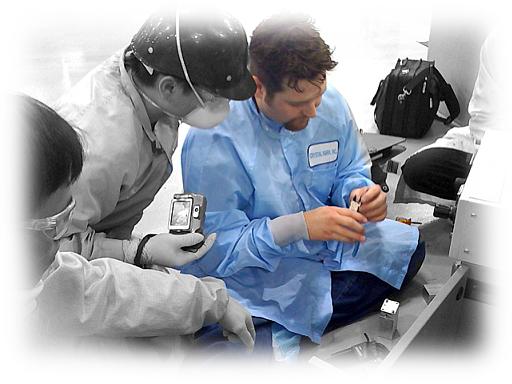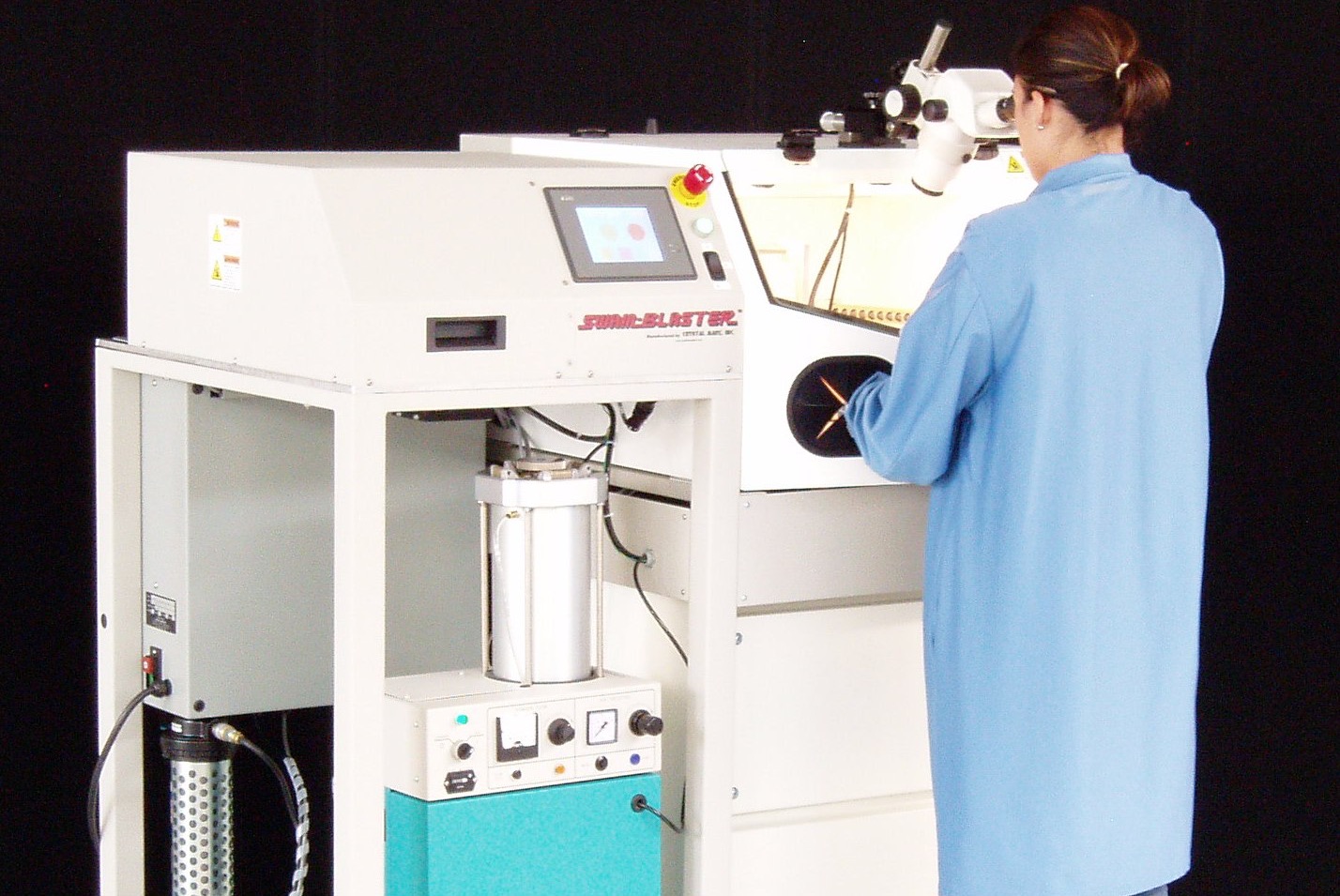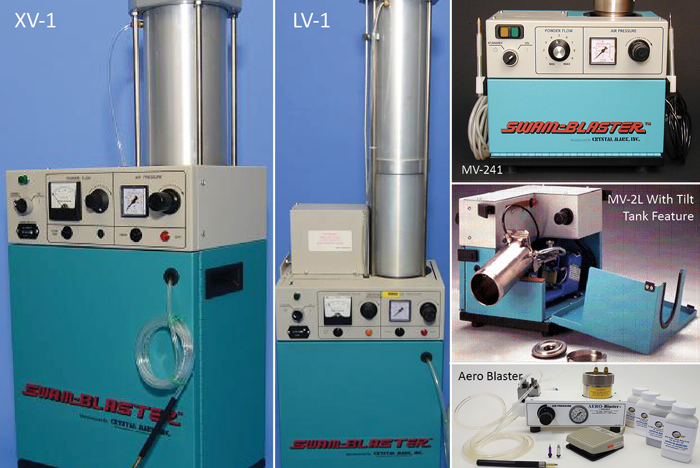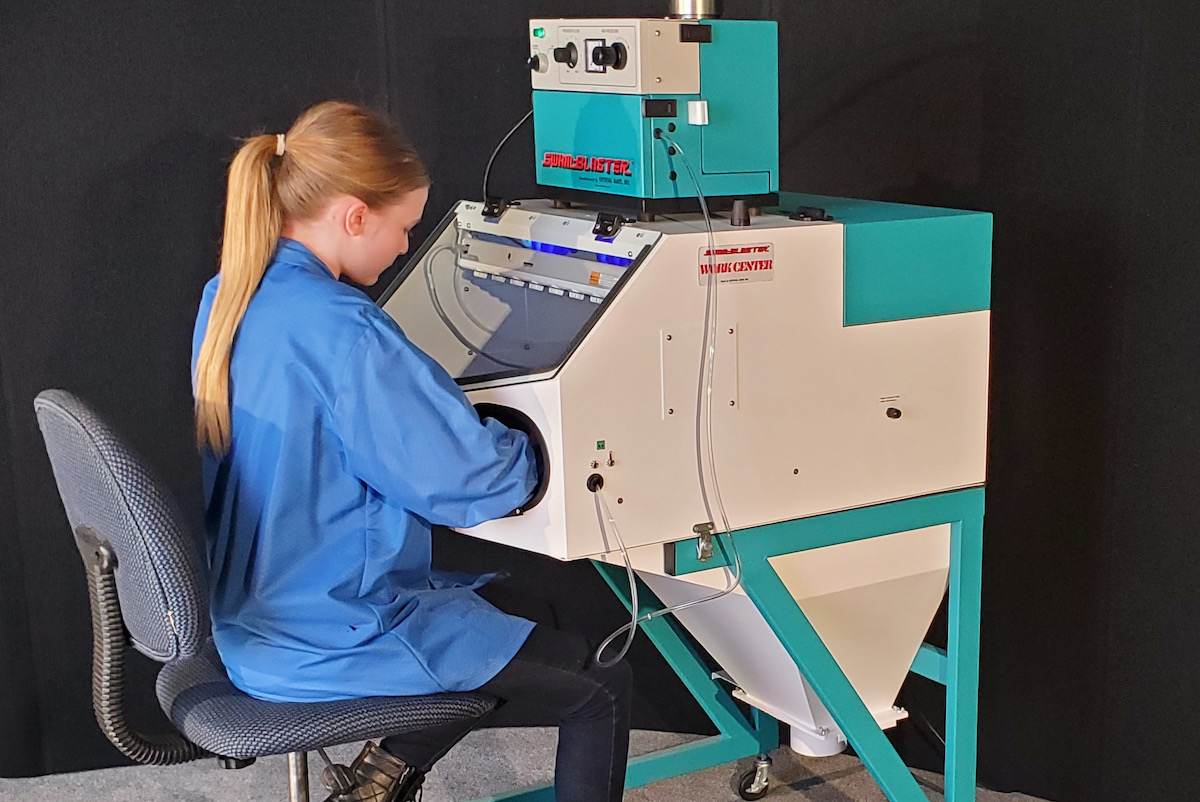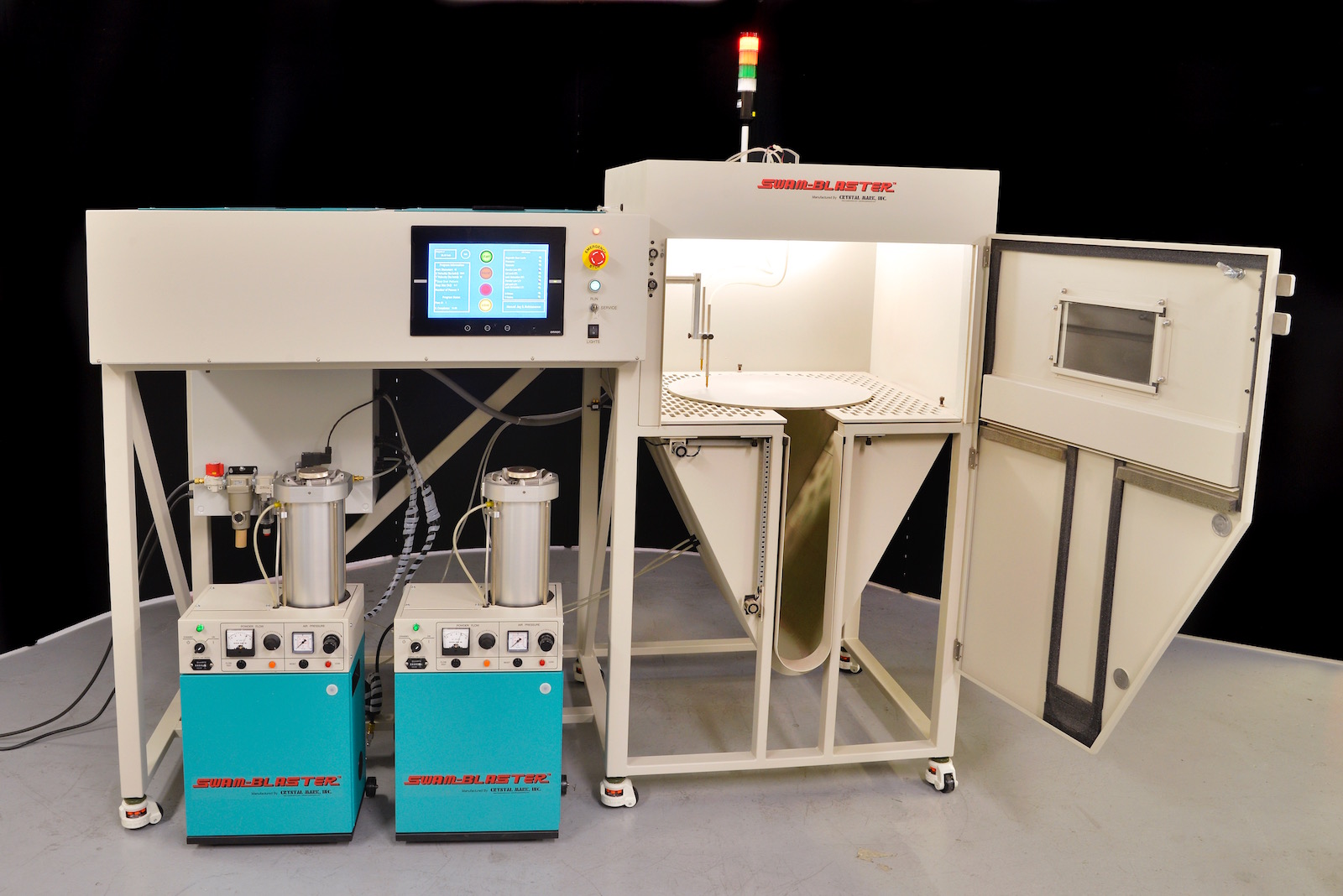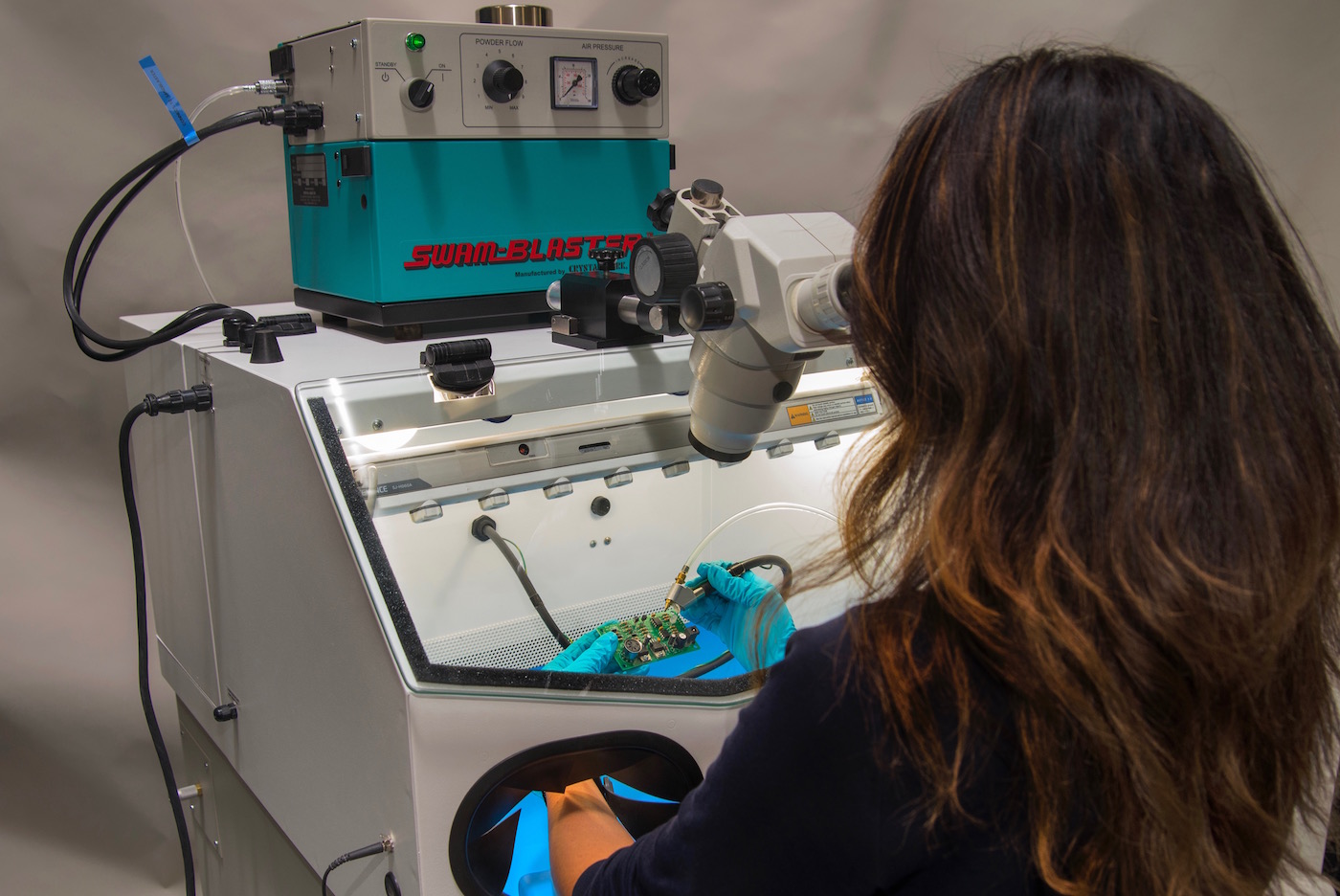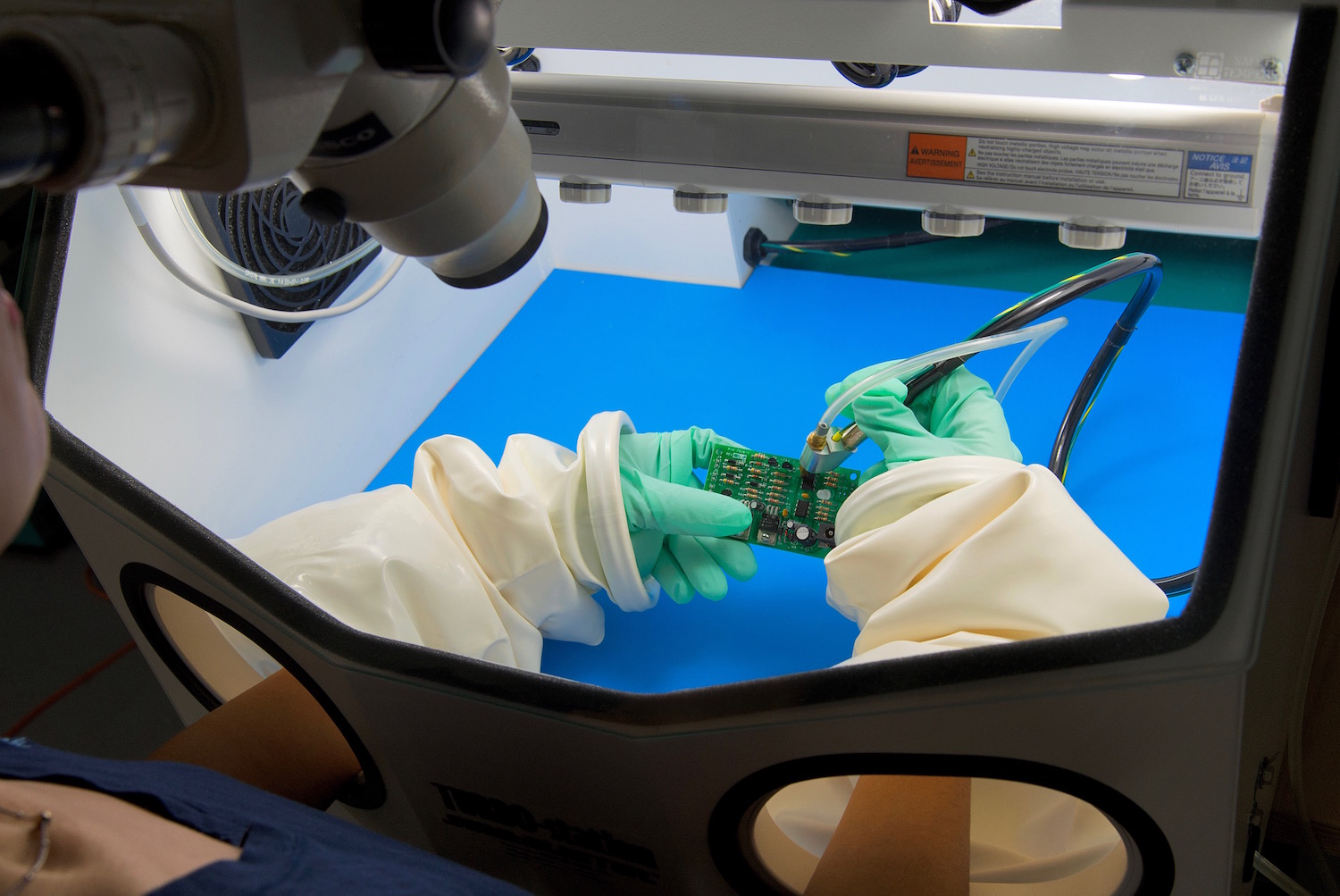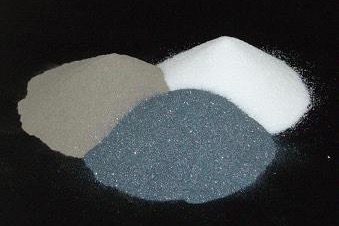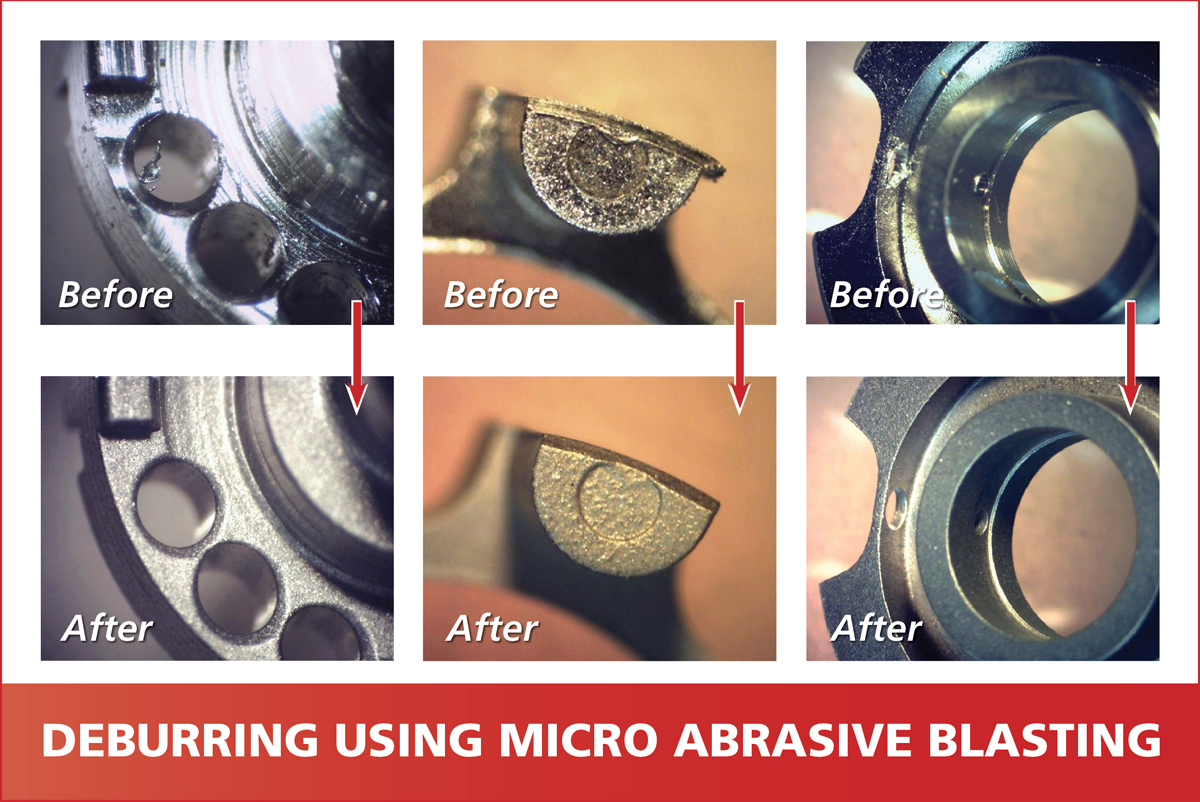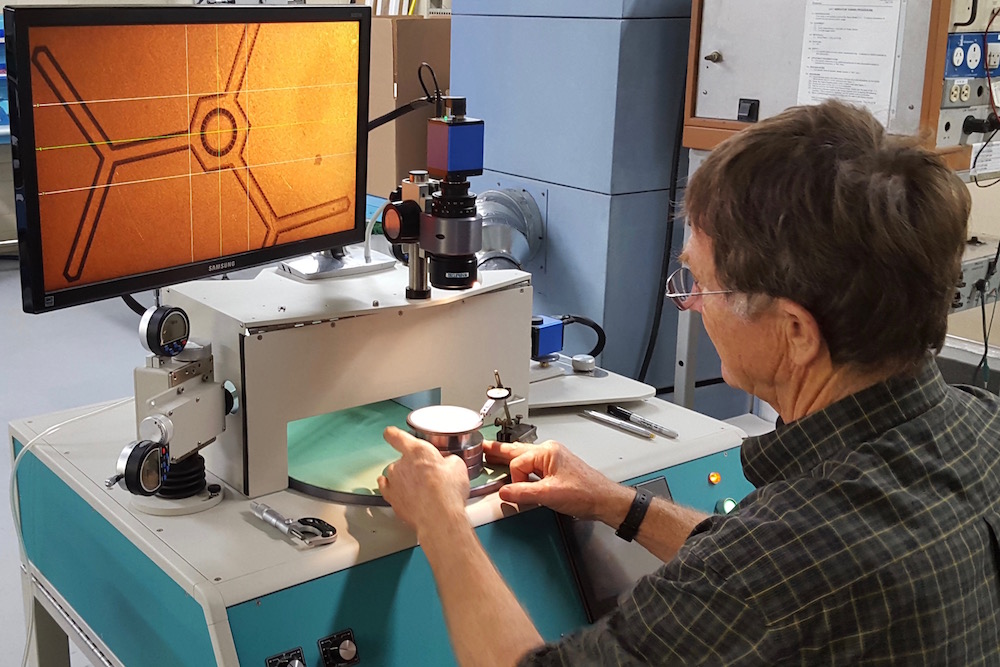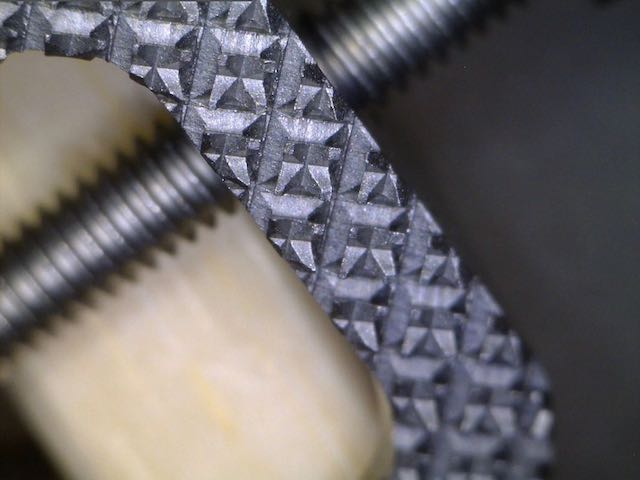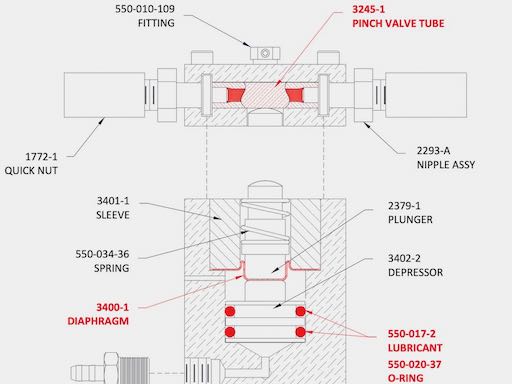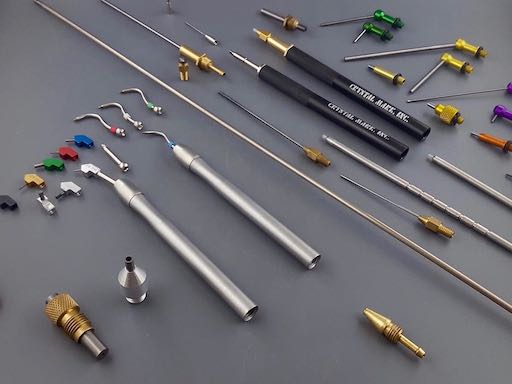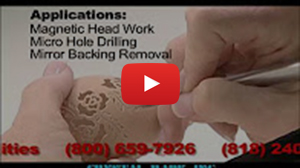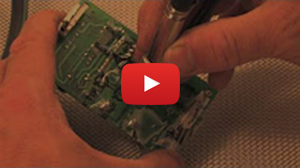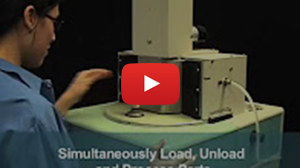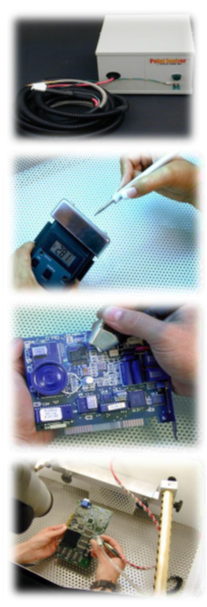The technique of micro abrasive blasting offers a fast, cost effective, easy-to-control method of removing conformal coatings that is also non-solvent based and environmentally friendly. In the micro abrasive blasting process, a precise mixture of dry air or an inert gas and an abrasive media is propelled through a tiny nozzle attached to a stylus which is either handheld or mounted on an automated system.
The micro abrasive systems generate static electricity as the high velocity particles impinge on the surfaces. The voltage generated at the area of impact can cause electrostatic discharge (ESD) damage to the parts and electrical circuits. Our experiments show that the ESD charges can be as high as 3000 volts, so controlling ESD is imperative for protection of the circuits.
There are many applications that are sensitive to ESD such as conformal coating removal, component demarking, and component deflashing. At Crystal Mark, Inc. we have extensive experience in controlling ESD effectively. We have continually improved this cutting edge technology through our research and engagement with our customers. See Nasa Evaluation of ESD Effects.

